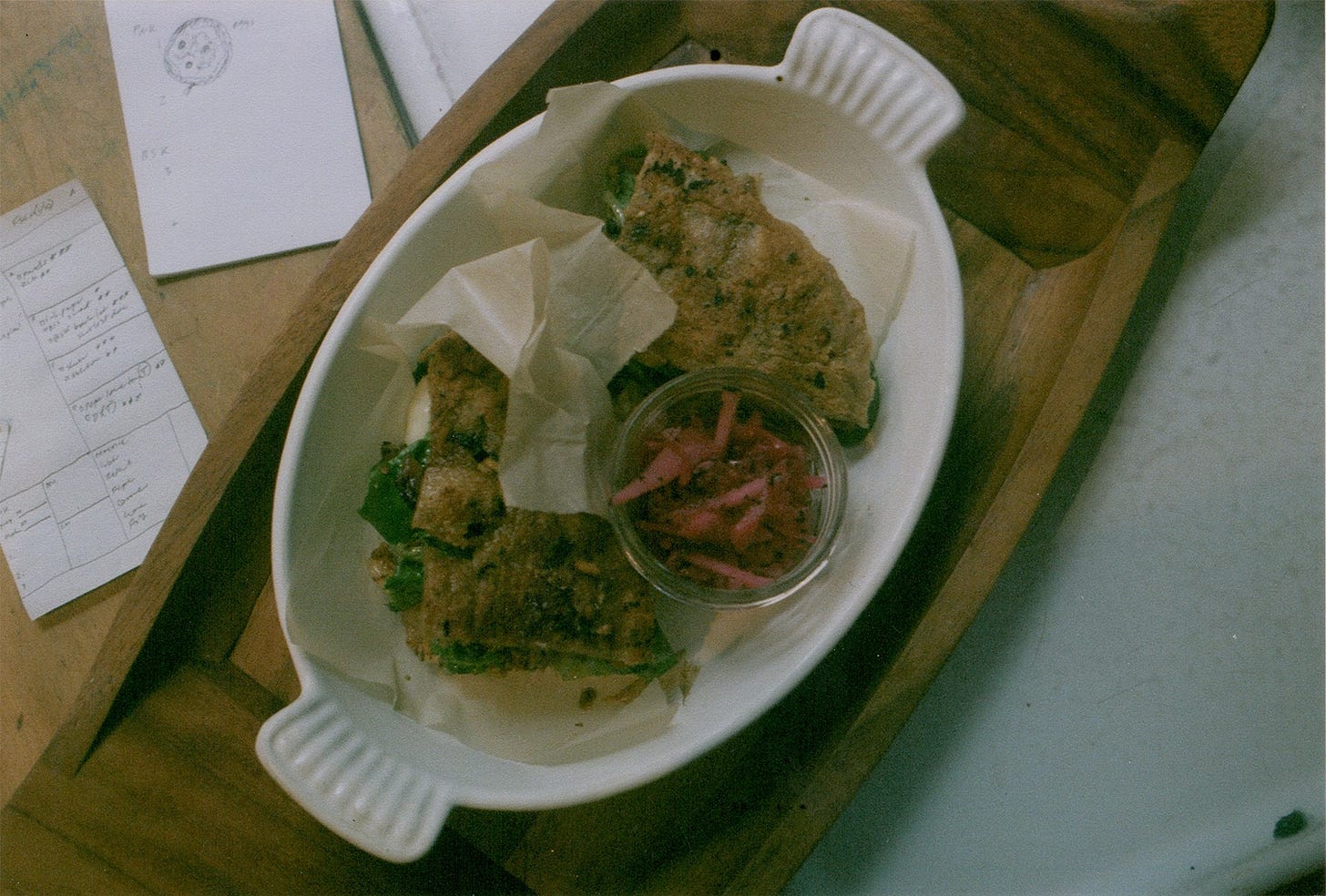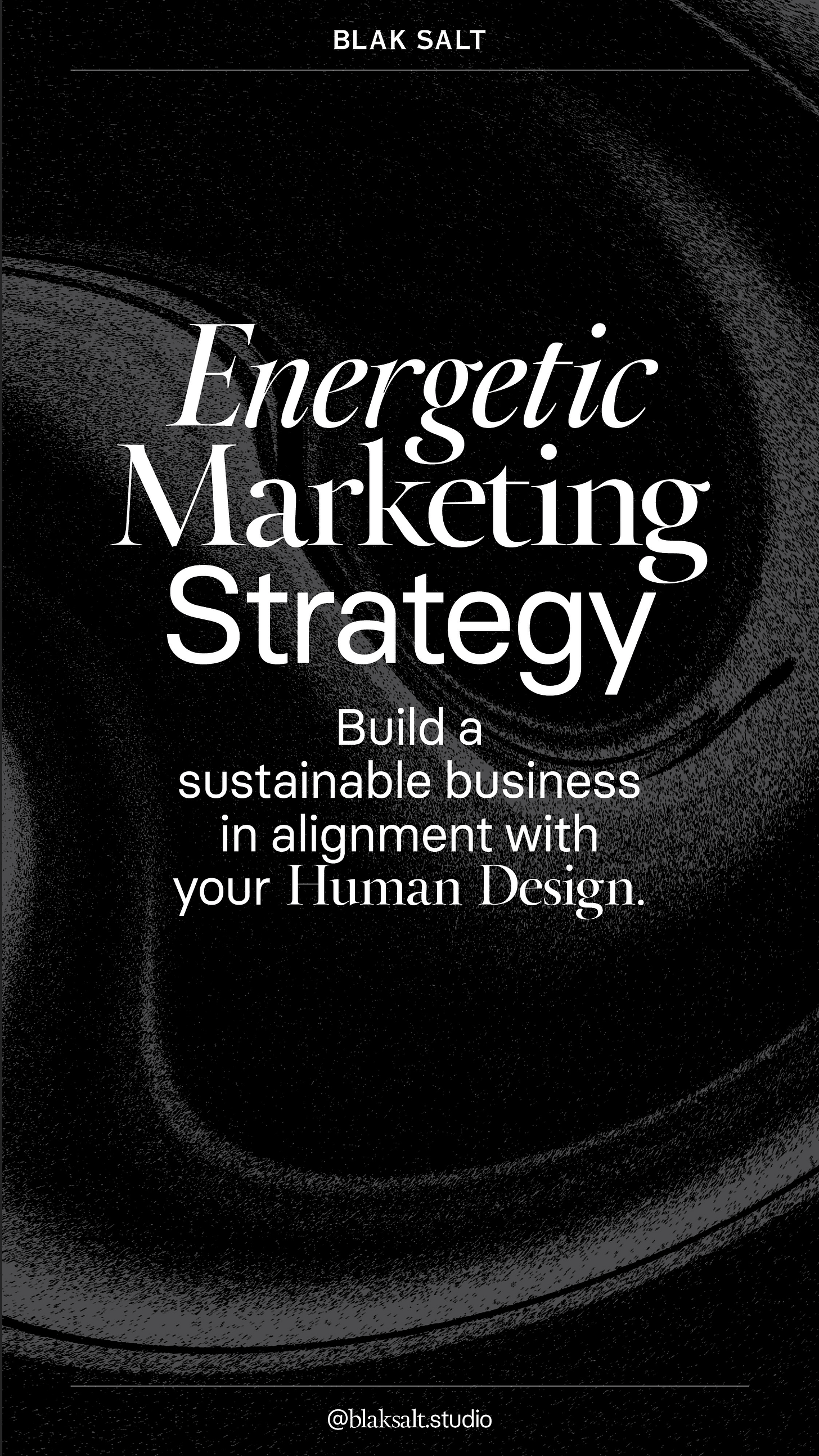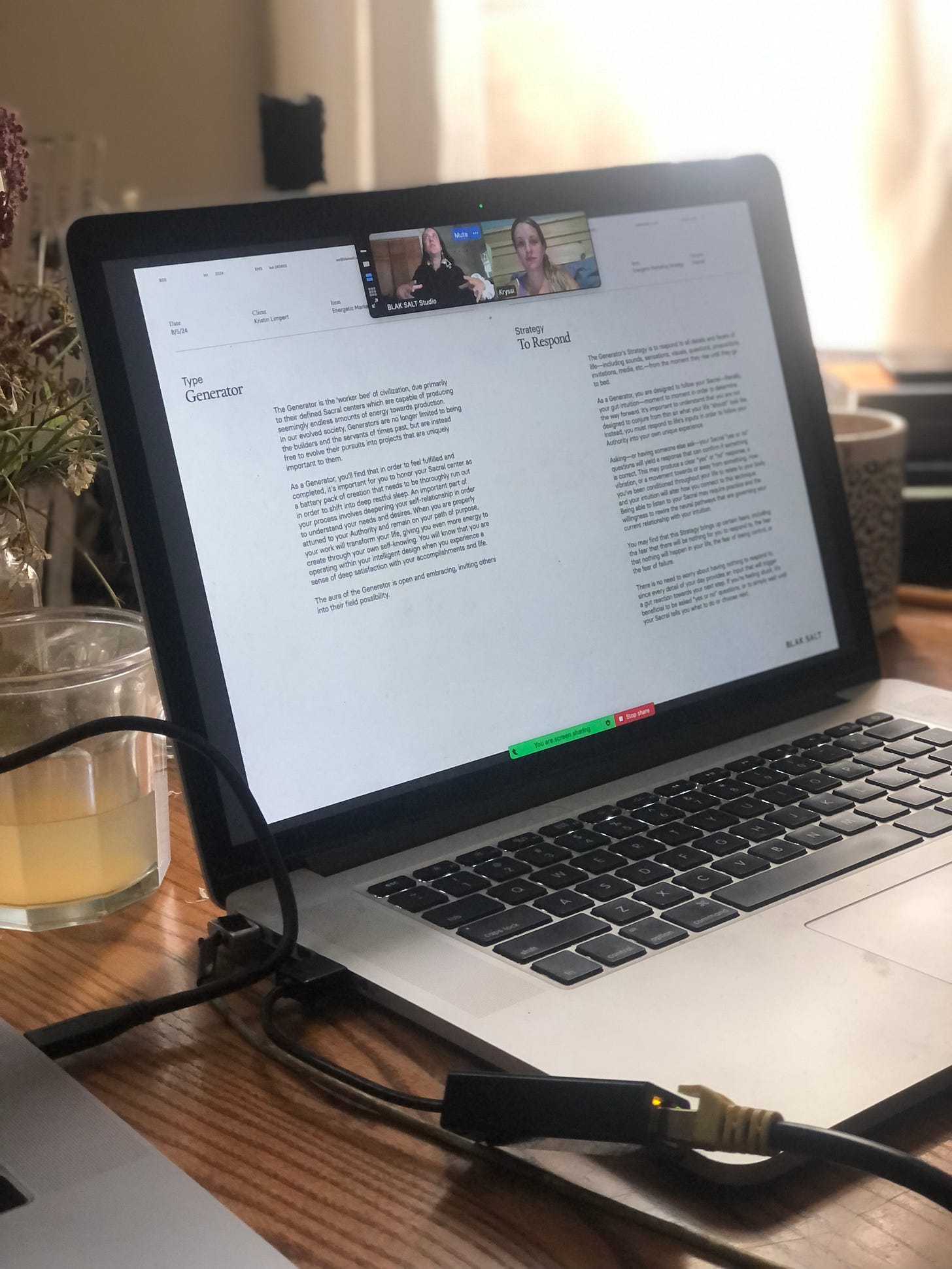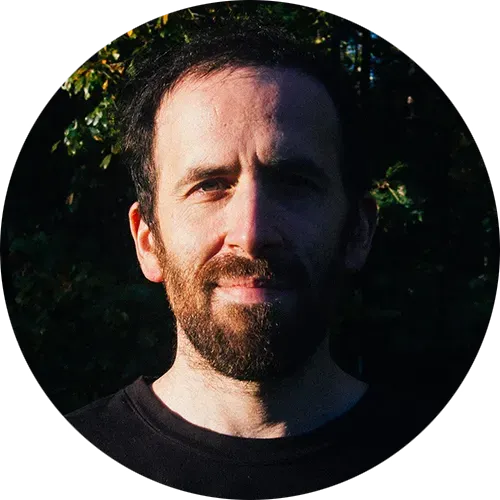“You at least deserve possession of your history.”
– Donald Judd
It happened one morning in the kitchen, while I was filling a glass bottle of drinking water. We were living in Montreal; Fauna was a little over a year old. We’d left New York City, our home for more than a decade, a couple months prior, and we were living in a haze of uncertainty, much like the rest of the world was. At the end of my morning routine, I would reorient my body and mind by preparing the kitchen for the day’s menu, and it would start by making sure that when my family rustled out of bed, they were greeted by an aesthetically pleasing reason to hydrate themselves upon waking. The mixture of rituals I practiced was simple; fluids, meditation, stretching, journaling, reading, and gathering and sorting inspiration. I was rebuilding my identity during a long flow state, normally waking at 3am and practicing until 7. I was infatuated with the ability to hear my thoughts for such a long period of time, before the world woke up. During stretches of quiet, I heard myself the clearest. And when I breathed, when I paused, my body and mind knew I needed to. So much of my life hadn’t accounted for exhalation.
When I did exhale, I noticed that the sunlight from the glass bottle was reflecting onto the wall, and it was dancing around the kitchen. It was energy, in motion. I rotated the bottle to highlight different moments in the room, as if they were to be seen as the focal point of the day. There was an arrangement of flowers in a small glass jar that Athena had picked the night before and had set on the table, simple and elegant. There was a small row of spices in small bottles on a wooden shelf next to the refrigerator, captivating my eye with reds and yellows and greens. I was tracing bits of an artful life that I hadn’t regarded while we were living in Red Hook, our previous home. But there was resonance happening in such a scene, as if I was being reassured of something. I just knew that I was experiencing the simplicity and complexity of peace, and truth, and self-evidence. Thanks to chasing the light.
When I stepped outside for the first time that day, still buzzing from the elation I felt in the kitchen just then, the crisp air reinforced my expanded sense of place. I couldn’t wait to spend more time in the kitchen, and after dropping Fauna off at her caretaker’s, I zoomed back to the apartment to cook breakfast. And I realized I wasn’t just cooking, I was crafting stories, based on other stories, for nourishment and betterment. The ingredients in my possession at the time were few, but whatever was produced tasted amazing nonetheless. I understood how to use time as a principal ingredient, and how to treat everything I incorporated with an intense level of attention, as if it was the most special, most expensive thing in the world, and that it was a privilege to eat it and share it with my family. And I took in the conversations that occurred between colors, compositions, textures, and even storytelling, through cooking for myself and my small family. It was the closest to nature I’d been in recent memory, the most receptive to natural living. And it was freeing.
So freeing in fact, that my way of experiencing the everyday completely shifted. started doing things without rationality, just to “chase the light,” as it were. I dropped flowers in bowls of water and held them out to the sun. I potentiated herbs with crystals overnight, under the moon, and observed how the phases affected the taste of the plants. I discovered cooking methods all my own, just by following my senses while I interacted with my surroundings. And Athena noticed the shift; to this day, she says my cooking is like my Tarot. It was how she had been able to read me, to experience my coping with where we’d been when we’d been there. My emotions were channeled through cooking, not just to provide, but also to creatively express.
It was the catalyst to starting a different worldview. Prior to finding myself in Canada, I was laid off from an agency job in New York City. Fauna was a year old, and I had Athena’s old job while she was taking care of Fauna at home. Sitting on a blanket at a park outside, listening to police officers admonishing us for not covering our faces, I remember thinking about how comfortable I became as an outsider. And that I was alright with not seeing what others around me chose to see. I was developing new values and shedding old ones brought on by my own conditioning. We’d left for Canada because we thought we’d find sanctuary there, but outside of finding heaven in the kitchen, we learned finding home again would come from within, first and foremost.
During my sessions of deeply meditating while cooking, where I found myself guided by intuition to receive subtle insights, I wondered: why did I never think of graphic design in this way? How, when I’m constantly looking for connection, chasing wholeness, searching for a common language, can I avoid doing what it takes to first honor myself? I h’d d started to see myself as a generalist, based in print design, who was losing his sense of purpose in his career. But in the kitchen, I saw that when I was fully present in my own designed self, I didn’t need validation beyond my own willingness to move through my thoughts and beliefs. I’d approached an idea of home. I was feeling centered and valuable, and indeed a translator of some knowledge that wasn’t communicated by words, but by motifs alone. What was this secret motivation, the original stimulus, that would bring these ideas into reality? Whatever it was, I knew it was unique to me and my point of view. That black salt, that unseen, beneath-the-surface nutrient that we all share, yet compositionally, to different degrees, based on our history and experiences. I needed to bring this concept outside of myself, because next to the birth of my daughter, this was the biggest thing to come into my realm of knowing.
As I started living more intentionally in tune with my newfound philosophy, it unfolded that the ethos of my way of thinking could be broadened if it was housed in a studio. I desired a domain to work this idea out, to expand it as far as it’d go, as if I was rolling fresh bread dough. At first, the studio was inside my head, which contented me. But of course, that didn’t get me anywhere as far as clients, or progress, or general expansion. It was through Athena teasing it out of me, since I was living in my head richly, that I began to materialize BLAK SALT. And thankfully, she understood that it was more than a studio: it was an entity to place over any landscape. A kitchen, farm to table. A school, teaching whatever principles came out of this. A big piece of land to exemplify everything I was understanding would fit in this schema. What was the schema, specifically? Homemade. Hyper-local. Native. Natural. Organic. True. Honest. Beautiful. Simple. Super-normal and extra-ordinary. Rebellious. And it’d take as long as it’d take to bring it out, because working fast and shallow was where we all came from, and working slow and deep is where we are now, and want to stay.
At first, I was focusing on a way for me to be creatively inspired and informed, like learning about the subjects that I was called to enter. Taoism, Buddhism, Traditional Chinese Medicine, mostly Eastern philosophy mixed with contemporary makers. But it was inarticulate. It was too big for me. Little by little, by having faith in the process, it settled into a rhythm. Hence the YouTube videos and hard drives full of theses from others.
My identity design professors were makers of all kinds. Chefs, aesthetes, clothiers, painters, theorists, athletes. I melted hard drives collecting a sheer amount of content from anyone I followed, devouring anything I could find online and saving it for constant revisiting, transcription, and synthesis.
I didn’t curate beyond picking seminars from people whom I admired, and I read everything I could find from those people, opening avenues to other figures who’d inspired who I was studying at the time, and exploring them as well. I learned that those inspirational figures, the so-called masters, understood the principles of chiseling an idea to a simple expression; as Judd would say, there wouldn’t be anything left which wouldn’t serve art. Expanding the concept of art outside putting ink to paper, while reflecting on life as a kind of art, brought those masters and their principles, or practices, ever closer to my understanding.
Masters and Practices was a way for me to receive an input, digest it, and make my own output. It was a way of meditating on what I took in. This was important as a precursor to what I learned to do for my clients through the studio, taking in what made them special and translating it to another medium for communication purposes. Deep meditation, deciphering their influences. I remember hearing stuff that people said and not only throwing them into a big document, but also breaking down what they said and speaking about why they were so profound to me. I developed routine upon routine that would set me up for maximum input to output. I did it before the sunrise. It was called Blak Mode. When my family woke up, I shut down the system, and lived in Light Mode. In a way, I was set to practice what I was learning with my family. And I refined the routines, and saved all my reflections, and monitored how much I was stretching and meditating and showering and all of these things that fueled my fulfillment. It was dubbed “mind-work,” and it now lives in suitcases in the closet (to be reviewed at a later date).
Through meditating on what drove me to seek truth in the world, tracing those ideas to inspirational figures who spent their lives learning to articulate them, absorbing those presentations, and integrating their insight in my waking life by connecting their findings to my every-day, I designed BLAK SALT to house those ideals. By recognizing that life was composed of magical interactions, as simple and complicated as the individual strand of the whole, I saw the need to re-approach my design practice in order to help my clients see similarly about their place in the world, and their unique gifts to it.
BLAK SALT Studio is the beginning. What Athena brings to the company is the energetic component. I was interested initially in bringing out the inner nature of the client through deep work, but she offered Human Design as the modality to do it. And it works. It’s provided a richness to the thesis of the project that’s deep, and we’re working side by side to bring services to creative entrepreneurs who are looking for a close connection with their brand, whether they’re just starting out or are a few years into the process. We fully understand we’re concept-driven creatives, here to work from the inception of the idea. And as we grow, we want to offer more to those who are searching for a better sense of home in their brands.
What does it look like? Hand-drawn illustrations. Original music scores. No AI. No prescriptions and protocols. Deep listening. Building lasting client relationships over cycling through paychecks. All of the things that I didn’t practice while designing professionally, because I didn’t learn how to. Maybe because I didn’t allow myself to see in this way. A product of the education system, a product of being shuttled from school to making for career’s sake. The studio is a rebirth, seeing the world through the eyes of a New Paradigm creator. And by embracing the co-creative nature of the studio, as I believe all studios should be, Athena and I transformed BLAK SALT into a family business. It now firmly stands on the values we found ourselves sharing, as we developed our relationship: the life-giving power of harmonic union.
Today, BLAK SALT Studio operates from the thesis that we can work as we strive to live in today’s world; in reciprocity to the whole, that honors individual strengths, interconnection with the natural world, and prosperity for makers of all personal characteristics. We do this with the assistance of the study of energetics, such as astrology, Human Design, and reflections on consciousness. Through these modalities, we’re able to create purpose-led design solutions, from branding and beyond, for those who are willing to believe that doing business, much like living, is a divine artful experience.
If you’ve reached the end of my article, I’d love to know:
While you’re journeying on your path, how often do you reflect on how far you’ve come? Are you spending time to look back on the progress you’ve made, or are you realizing your vision while only focused on the horizon?
Leave a comment, if you’re inspired to reply.
In reverence for the process,
Alex Konsevick

















